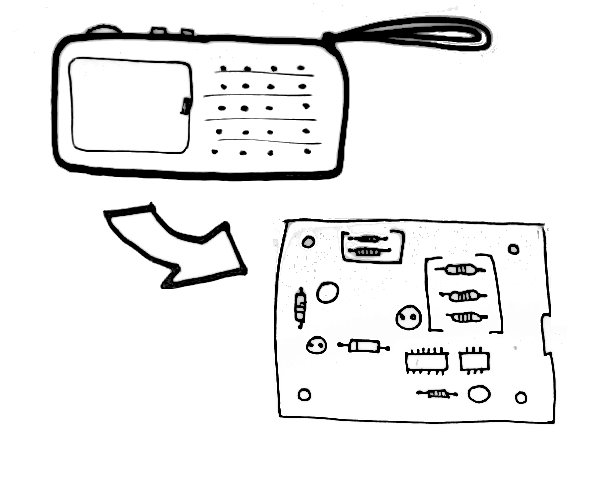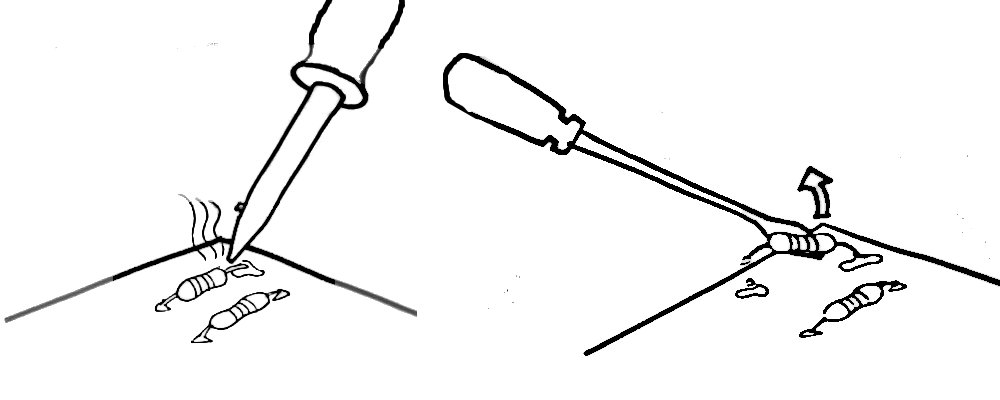Resistors
You can buy these from electronic stores in town or from a repairman. You can also find old radios or other trash circuit boards and take the resistors off them. This requires melting the solder, easy with a soldering iron, but also possible 31 with a stiff wire thrust into a charcoal stove.


If you need to know the ohms, the resistors tell you. Each has four strips (five if there is a quality band) and should be read with the silver or gold strip for tolerance on the right. Each color corresponds to a number: black = 0, brown = 1, red = 2, orange = 3, yellow = 4, green = 5, blue = 6, violet = 7, gray = 8, white = 9, and additionally for the third stripe, gold = -1 and silver = -2. The first two numbers should be taken as a two digit number, so green violet would be 57, red black 20, etc. The third number should be taken as the power of ten (a 10n term), so red orange yellow would be 23 × 104 = 230000, red brown black would be 21 × 100 = 21 and blue gray silver would be 68 × 10−2 = 0.68. The unit is always ohms. The fourth and possibly fifth bands may be ignored.
Capacitors, diodes, transistors, inductors and other useful circuit parts can also be bought at shops in town or liberated from old circuit boards, radios, phone chargers, etc. Capacitors tend to state their capacitance in microFarads on their bodies.